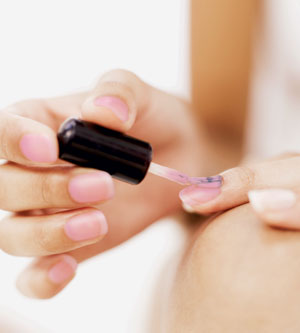It is always good to re-visit the awareness of our health in relation to our every day personal care choices and if it includes any "bad chemical" exposure. As we've learned, many of our personal-care products contain carcinogens, “hidden carcinogens”, allergens, hormone disruptors and abundant nano-particles.
Hard FACTS to be aware of:
Each day at least 3 personal-care products are applied to the skin of of children and infants. Women use an average of 13 and six or more cosmetics while men use 10. Many of the products are applied to the skin several times per day. The average women applies over 515 chemicals to her face per day!
We now know that 1 in every 3 women and 1 in every 2 men will develop cancer. Therefore we should do everything in our power to reduce and remove any cancer promoting factors from our environment.
Unfortunately, the "top ingredient avoidance" list can be long and daunting.
 To make it simple, our top picks at the moment are:
To make it simple, our top picks at the moment are:
Parabens: Act as endocrine disruptors and my poor hormonal system is already confused enough.
Look for: Methylparaben, Propylparaben, Isoparaben, or Butylparaben.
Phythalates: Hormone-disrupting chemicals
Look for: Vinyl, PVC, Phthalates, DEHP, Fragrance and Parfum
Petrochemicals: Petroleum byproducts that coat the skin like plastic and clog the pores.
Look for: (Paraffin Wax, Mineral Oil, Toluene, Benzene, Phenoxyethanol, Anything with P Anything with DEA (diethanolamine) or MEA(ethanolamine), Butanol and any word with ‘butyl’, Ethanol and words with‘ethyl’, Any word with “propyl”, Methanol and any word with ‘methyl’, Parfum or fragrance – 95% of chemicals used in fragrance are from petroleum and they dry the skin and hair.

The "toxic trio" in nail polishes. Linked to cancer, neurologicaldamage, and reproductive harm.
Look for: dibutyl phthalate, formaldehyde and toluene.
HAIR COLOR TOXIC 3
PPD
Paraphenylenediamine is a chemical substance that is widely and traditionally used as a permanent hair dye. People who are highly allergic to PPD have not been able to dye their hair with traditional hair color.
-
Known as a possible carcinogen
-
Allergies to PPD are common and reactions include dermatitis, reddening and swelling of the scalp and face.
-
In some severe allergy cases the eyelids may completely close and can result in contact urticaria and anaphylaxis.
RESORCINOL
Used as a coloring agent and is also commonly found in topical acne treatments.
-
Suspected to be an endocrine toxicity hazard
-
Suspected to be a human immune system toxicant
-
Suspected to be toxic to wildlife and the environment
AMMONIA
A chemical that swells the hair cuticle so that color can be absorbed all the way through the hair.
-
Unpleasant odor
-
Many people become allergic due to exposure and suffer from itchy scalps and watery/red eyes while getting their hair colored.


